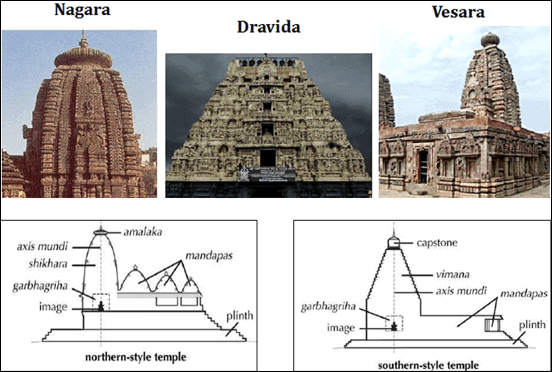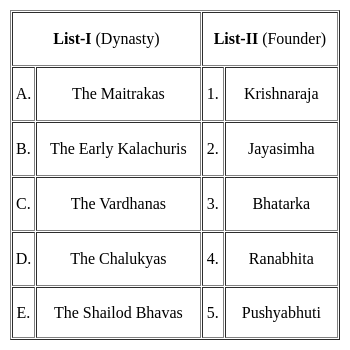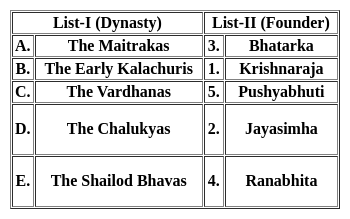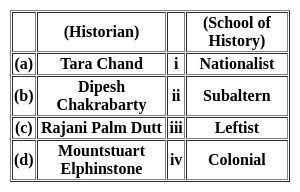MH SET Paper 2 Mock Test - 10 (History) - MAHA TET MCQ
30 Questions MCQ Test MH SET Mock Test Series 2025 - MH SET Paper 2 Mock Test - 10 (History)
Name the kingdom which first used elephants in wars?
Consider the following statements regarding Round table Conferences:
- The 1st Round Table Conference was chaired by the British Prime Minister, Ramsay MacDonald.
- In the 2nd Conference, Atlee announced the formation of North-West Frontier Province.
- Tej Bahadur Sapru represented the Liberals in the 2nd Conference.
Which of the statements given above is/are not correct?
Consider the following statements regarding Fatehpur Sikri City:
1. The city was built by Mughal Emperor Akbar as a token of gratitude to Sheikh Salim Chisti.
2. The city is predominantly made up of Red Sand Stone.
3. It is a unique blend of Hindu and Islamic Architecture.
Which among the following above given statements are correct?
With reference to freedom struggle of India, consider the following statements of Swadeshi Movement:
1. In Rawalpindi (Punjab), the arsenal and railway workers went on strike led by Lala Lajpat Rai and Ajit Singh.
2. Subramania Siva and Chidambaram Pillai led strikes in Tuticorin and Tirunelveli in a foreign-owned cotton mill.
Which of the above statements is/are not correct?Consider the following statements.
1. There are subdivisions of nagara temples depending on the shape of the shikhara.
2. Phamsana buildings tend to be broader and shorter than latina ones.
3. Valabhi type is a circular building with a roof that rises into a vaulted chamber.
Which among the above statements is/are correct?
A common feature of all Bhakti Saints was that all of them-
Which of the following pairs are correctly matched?
- Ghatika: Ancient centre of learning
- Devaram: Composed by Nayanars
- Nalayradivyaprabandam: Composed by Alwars
Select the correct answer from the codes given below:
In the context of later Vedic age, read the following statement(s) and select those that may not be correct?
1. It cannot be said that the Vedic society shifted to East.
2. The Vedic society used iron technology mostly for weapons of war.
3. In agriculture only labour intensive technology was used.
4. People married outside their 'gotra'
Select the correct answer using the codes given below.
Match the following and choose the correct option:
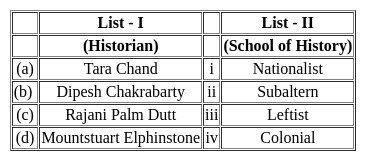
With reference to Ryotwari Settlement, consider the following statements:
1) The rent was paid directly by the peasants to the Government.
2) The Government gave Pattas to the Ryots.
3) The lands were surveyed and assessed before being taxed.
Which of the statements given above is/are correct?
In which of the following areas are the beginning of settled life associated with a Chalcolithic rather than a Neolithic phase?
1. Rajasthan
2. Malwa
3. Northern Deccan
4. Gujarat
Select the correct answer using the codes given below
The Regulating Act was passed in which year?
Which among the following incident took place during the viceroyship of Lord Canning?
- Government of India Act of 1858 passed
- Indigo revolt
- Indian Council Act of 1861 passed
- Famine in the North-Western provinces
Choose the correct option from the codes given below :
Historiography is:
A. History of history
B. A specific body of Historical writing.
C. Study of historical writing and memory.
D. Committing the past to writing.
The term ‘Rashtra’ first appeared in which of the following periods?
Match List I with List II, and select the correct answer by using the codes given below the lists:
List - I
I. Lingayats
II. Alwar
III. Nayanar
IV. Advaita
List - II
a. Andal
b. Karaikkal Ammaiyar
c. Basava
d. Shankara
Codes:
Which of the following is not correctly matched:
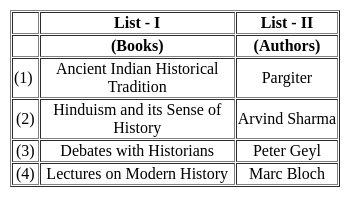
Which among the following recommendations of the Aitchison committee are correct?
- Maximum age of entry in civil service was fixed at 23
- Simultaneous examination in England and India should be stopped
- Two-tier classification of Civil Service would be replaced by a three-tier classification
- Statutory Civil Service should be abolished
Choose the correct option from the codes given below:
Asoka is throughout referred to as ‘Devanampiya’ and ‘Piyadasi’ in his edicts except a few. Which are such exceptions?
(i) Maski
(ii) Gujarra
(iii) Nittur
(iv) Udegolam
Select the correct answer with the help of the codes given below:
Which one of the following did not form part of the Asokan empire?
With respect to medieval India, Consider the following pairs:

Which of the pairs given above are correctly matched?
Arrange the following Mughal emperors in chronological sequence:
(a) Farrukhsiyar
(b) Jahandar Shah
(c) Bahadur Shah
(d) Muhammad Shah
Select the correct option:
The Satavahana kingdom was divided into subdivisions which were known as?
The capital of India was transferred from Calcutta to Delhi in which year?
|
60 tests
|



